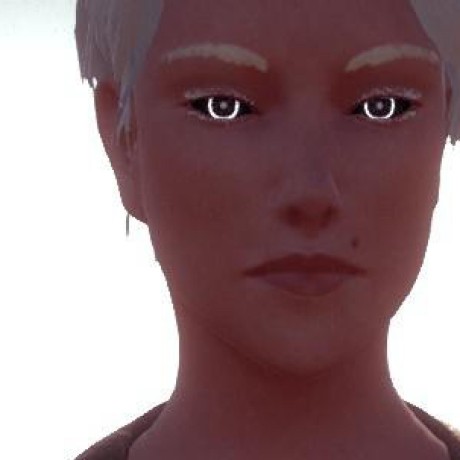lib-pbr.glsl
Public Functions:
normal_distrib
fresnel
G1
visibility
horizonFading
pbrComputeDiffuse
pbrComputeSpecular
Number of miplevels in the envmap.
Copied to your clipboard//: param auto environment_max_loduniform float maxLod;
An int representing the number of samples made for specular contribution computation. The more the higher quality and the performance impact.
Copied to your clipboard//: param custom {//: "default": 16,//: "label": "Specular quality",//: "widget": "combobox",//: "values": {//: "Very low (4 spp)": 4,//: "Low (16 spp)": 16,//: "Medium (32 spp)": 32,//: "High (64 spp)": 64,//: "Very high (128 spp)": 128,//: "Ultra (256 spp)": 256//: },//: "group": "Base Surface",//: "description": "<html><head/><body><p>The quality of the specular reflection. Choose the number of samples per pixel (SPP).</p></body></html>"//: }uniform int nbSamples;
Value used to control specular reflection leaking through the surface.
Copied to your clipboard//: param custom {//: "default": 1.3,//: "label": "Horizon fading",//: "min": 0.0,//: "max": 2.0,//: "group": "Base Surface",//: "description": "<html><head/><body><p>Reduces unexpected specular reflection at angles pointing beneath the surface horizon.</p></body></html>"//: }uniform float horizonFade;
Import from library, other parameters
Copied to your clipboardimport lib-env.glslimport lib-emissive.glslimport lib-random.glslimport lib-vectors.glsl
BRDF related functions
Copied to your clipboardconst float EPSILON_COEF = 1e-4;float normal_distrib(float ndh,float Roughness){// use GGX / Trowbridge-Reitz, same as Disney and Unreal 4// cf http://blog.selfshadow.com/publications/s2013-shading-course/karis/s2013_pbs_epic_notes_v2.pdf p3float alpha = Roughness * Roughness;float tmp = alpha / max(1e-8,(ndh*ndh*(alpha*alpha-1.0)+1.0));return tmp * tmp * M_INV_PI;}vec3 fresnel(float vdh,vec3 F0){// Schlick with Spherical Gaussian approximation// cf http://blog.selfshadow.com/publications/s2013-shading-course/karis/s2013_pbs_epic_notes_v2.pdf p3float sphg = exp2((-5.55473*vdh - 6.98316) * vdh);return F0 + (vec3(1.0) - F0) * sphg;}vec3 fresnel(float vdh,vec3 F0,vec3 F82){vec3 b = (1.0 - F82) * (F0 * 9.48471792 + 8.16666665);float e = 1.0 - vdh;float e5 = e * e; e5 *= e5 * e;vec3 offset = (1.0 - F0 - b * (vdh * e)) * e5;return clamp(F0 + offset, 0.0, 1.0);}float G1(float ndw, // w is either Ln or Vnfloat k){// One generic factor of the geometry function divided by ndw// NB : We should have k > 0return 1.0 / ( ndw*(1.0-k) + k );}float visibility(float ndl,float ndv,float Roughness){// Schlick with Smith-like choice of k// cf http://blog.selfshadow.com/publications/s2013-shading-course/karis/s2013_pbs_epic_notes_v2.pdf p3// visibility is a Cook-Torrance geometry function divided by (n.l)*(n.v)float k = max(Roughness * Roughness * 0.5, 1e-5);return G1(ndl,k)*G1(ndv,k);}vec3 cook_torrance_contrib(float vdh,float ndh,float ndl,float ndv,vec3 F0,vec3 F82,float Roughness){// This is the contribution when using importance sampling with the GGX based// sample distribution. This means ct_contrib = ct_brdf / ggx_probabilityreturn fresnel(vdh, F0, F82) * (visibility(ndl, ndv, Roughness) * vdh * ndl / ndh );}vec3 cook_torrance_contrib(float vdh,float ndh,float ndl,float ndv,vec3 Ks,float Roughness){return cook_torrance_contrib(vdh, ndh, ndl, ndv, Ks, vec3(1.0), Roughness);}vec3 uniformSample(vec2 Xi, vec3 T, vec3 B, vec3 N){float cosT = Xi.y;float sinT = sqrt(1.0-cosT*cosT);float phi = 2.0*M_PI*Xi.x;returnT * (sinT*cos(phi)) +B * (sinT*sin(phi)) +N * cosT;}vec3 importanceSampleGGX(vec2 Xi, vec3 T, vec3 B, vec3 N, float roughness){float a = roughness*roughness;float cosT = sqrt((1.0-Xi.y)/(1.0+(a*a-1.0)*Xi.y));float sinT = sqrt(1.0-cosT*cosT);float phi = 2.0*M_PI*Xi.x;returnT * (sinT*cos(phi)) +B * (sinT*sin(phi)) +N * cosT;}float probabilityGGX(float ndh, float vdh, float Roughness){return normal_distrib(ndh, Roughness) * ndh / (4.0*vdh);}float distortion(vec3 Wn){// Computes the inverse of the solid angle of the (differential) pixel in// the cube map pointed at by Wnfloat sinT = sqrt(1.0-Wn.y*Wn.y);return sinT;}float computeLOD(vec3 Ln, float p){return max(0.0, (maxLod-1.5) - 0.5 * log2(float(nbSamples) * p * distortion(Ln)));}
Horizon fading trick from https://marmosetco.tumblr.com/post/81245981087
Copied to your clipboardfloat horizonFading(float ndl, float horizonFade){float horiz = clamp(1.0 + horizonFade * ndl, 0.0, 1.0);return horiz * horiz;}
Compute the lambertian diffuse radiance to the viewer's eye
Copied to your clipboardvec3 pbrComputeDiffuse(vec3 normal, vec3 diffColor){return envIrradiance(normal) * diffColor;}
Compute the microfacets specular reflection to the viewer's eye
Copied to your clipboardvec3 pbrComputeSpecular(LocalVectors vectors,vec3 F0,vec3 F82,float roughness,float occlusion,float bentNormalSpecularAmount){vec3 radiance = vec3(0.0);float ndv = dot(vectors.eye, vectors.normal);// Bent normals occlusionfloat occlusionStart = 0.75 - occlusion;float occlusionEnd = 1.0 - occlusion;vec3 envT = worldToEnvSpace(vectors.tangent);vec3 envB = worldToEnvSpace(vectors.bitangent);vec3 envN = worldToEnvSpace(vectors.normal);vec3 envE = worldToEnvSpace(vectors.eye);vec3 envVertexNormal = worldToEnvSpace(vectors.vertexNormal);vec3 envBent = worldToEnvSpace(vectors.bent);for(int i=0; i<nbSamples; ++i){vec2 Xi = fibonacci2DDitheredTemporal(i, nbSamples);vec3 Hn = importanceSampleGGX(Xi, envT, envB, envN, roughness);vec3 Ln = -reflect(envE,Hn);float fade = horizonFading(dot(envVertexNormal, Ln), horizonFade);float specOcclusion = 1.0;if(bentNormalSpecularAmount!=0.0){float mask = 1.0 - sqrt(1.0 - max(0.0, dot(envBent, Ln)));specOcclusion = smoothstep(occlusionStart, occlusionEnd, mask);specOcclusion = mix(1.0, specOcclusion, bentNormalSpecularAmount);}float ndl = dot(envN, Ln);ndl = max( 1e-8, ndl );float vdh = max(1e-8, dot(envE, Hn));float ndh = max(1e-8, dot(envN, Hn));float lodS = roughness < 0.01 ? 0.0 : computeLOD(Ln, probabilityGGX(ndh, vdh, roughness));radiance += fade * specOcclusion * envSample(Ln, lodS) *cook_torrance_contrib(vdh, ndh, ndl, ndv, F0, F82, roughness);}// Remove occlusions on shiny reflectionsradiance /= float(nbSamples);return radiance;}vec3 pbrComputeSpecular(LocalVectors vectors,vec3 F0,vec3 F82,float roughness){return pbrComputeSpecular(vectors, F0, F82, roughness, 1.0, 0.0);}vec3 pbrComputeSpecular(LocalVectors vectors,vec3 specColor,float roughness,float occlusion,float bentNormalSpecularAmount){return pbrComputeSpecular(vectors, specColor, vec3(1.0), roughness, occlusion, bentNormalSpecularAmount);}vec3 pbrComputeSpecular(LocalVectors vectors,vec3 specColor,float roughness){return pbrComputeSpecular(vectors, specColor, roughness, 1.0, 0.0);}
